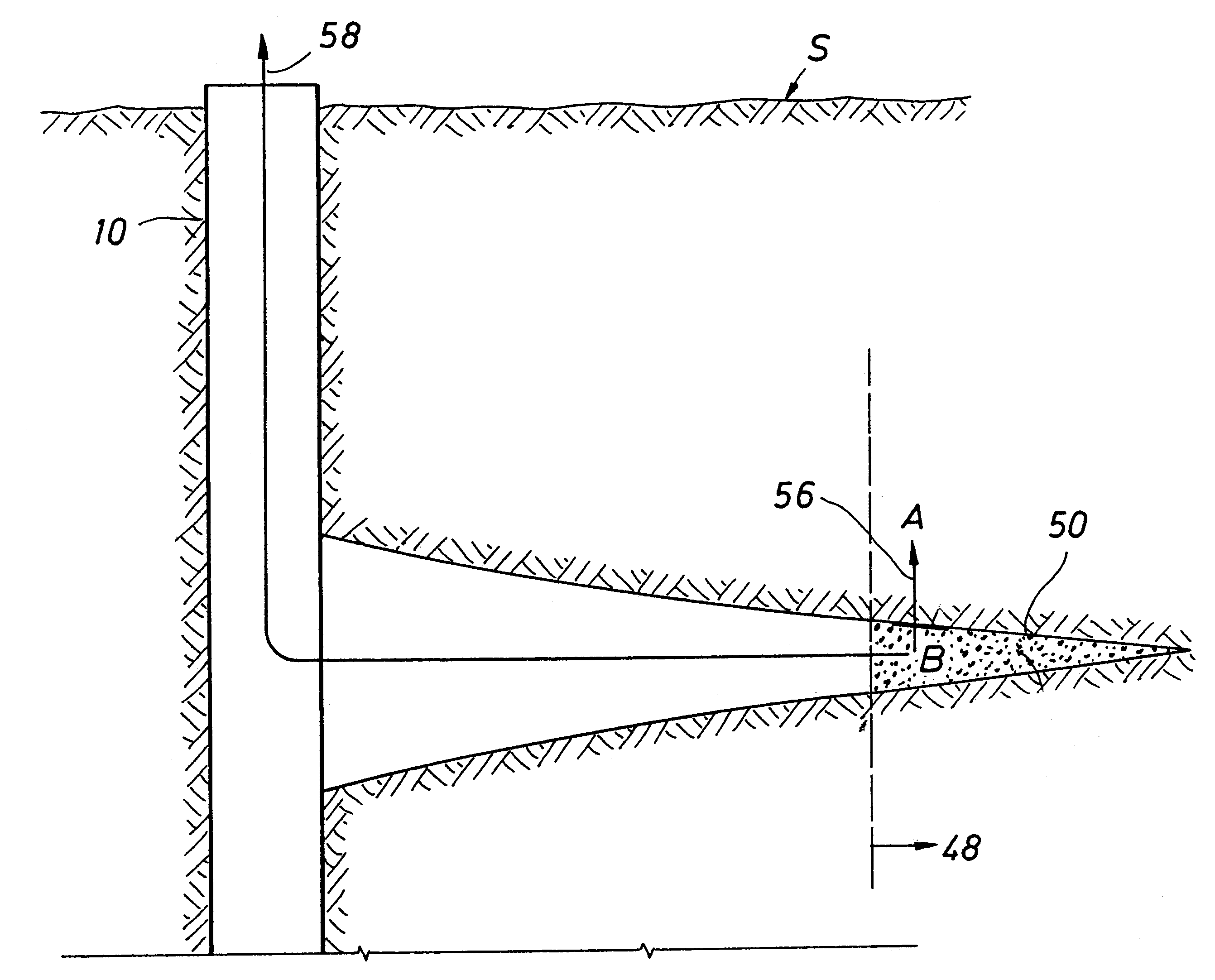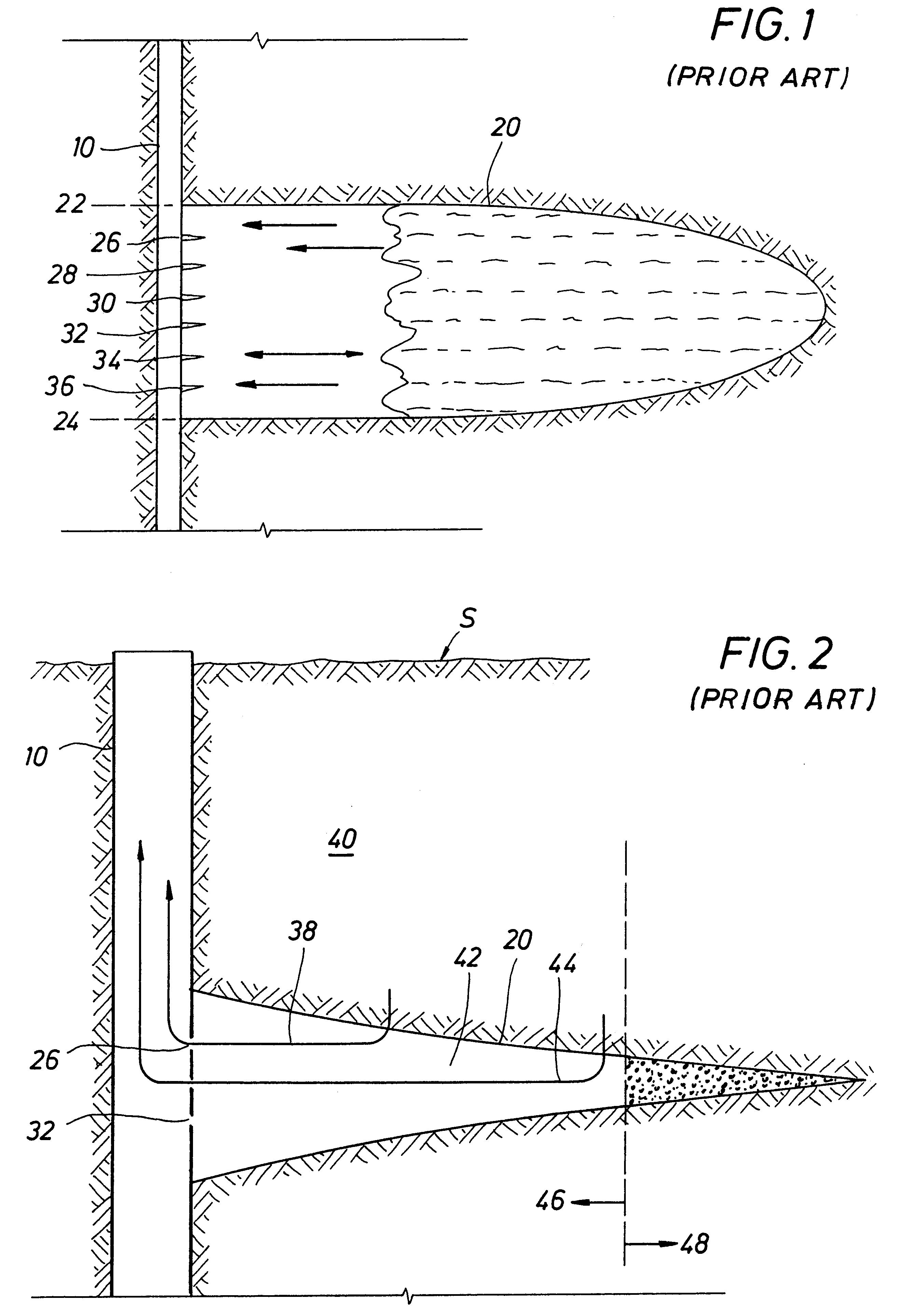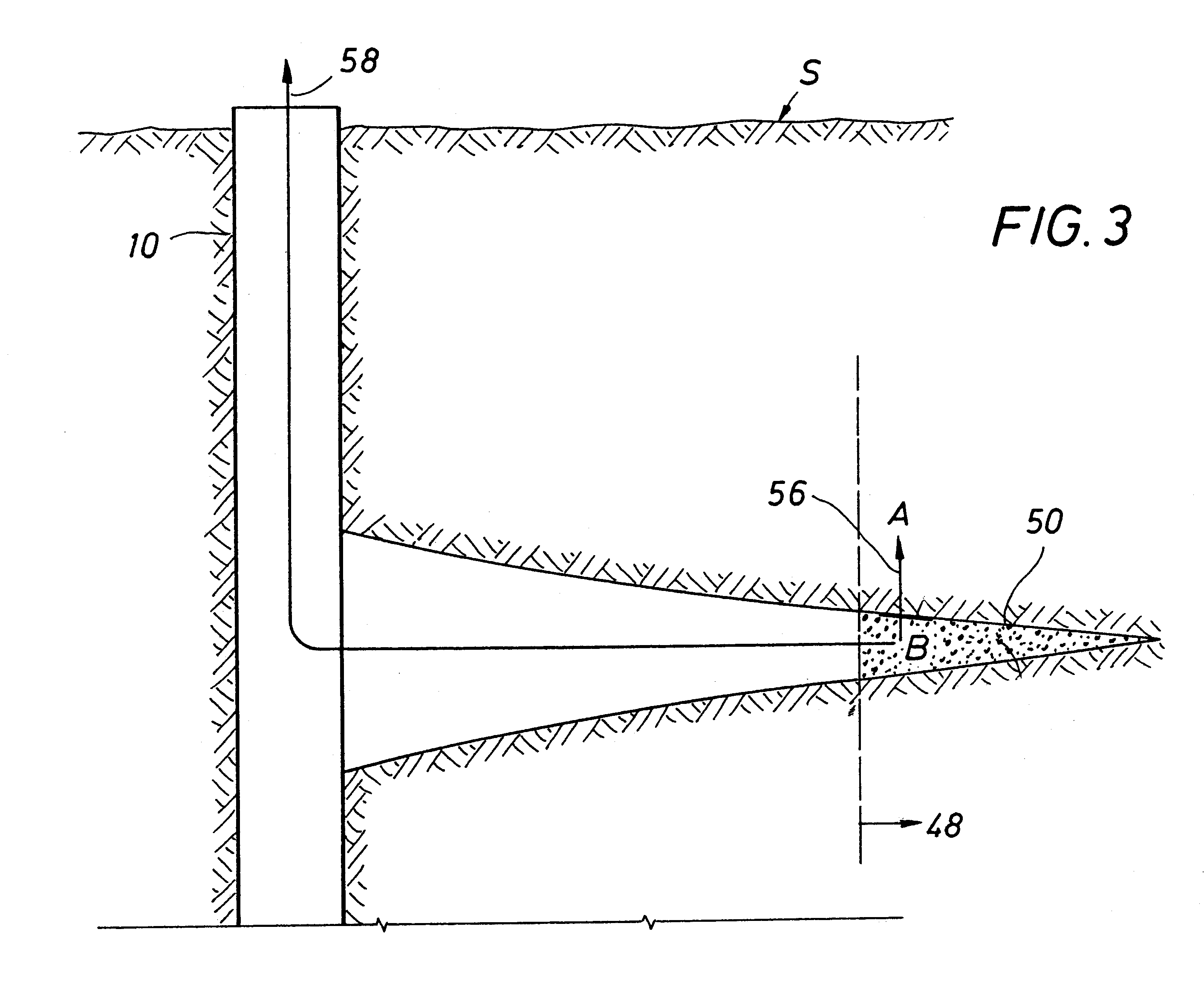Method and apparatus for deliberate fluid removal by capillary imbibition
a technology of deliberate fluid removal and imbibition, which is applied in the direction of folding cabinets, borehole/well accessories, cabinets, etc., can solve the problems of ineffective methods, and achieve the effects of enhancing production capacity, and increasing the effective fracture length
- Summary
- Abstract
- Description
- Claims
- Application Information
AI Technical Summary
Benefits of technology
Problems solved by technology
Method used
Image
Examples
example 2
Numerical Simulation of Fracture Fluid Clean-up Based on the Empirically Based Flow Parameter
Having obtained this volume flux parameter, we now perform a numerical simulation of fracture clean-up (the movement of spent fracturing fluid out of the fracture and into the formation), based on the laboratory-derived parameter.
To ensure that the results from the computer simulation mimic as closely as possible, real-world conditions, the parameter used to describe flow due to capillary imbibition (J.sub.v, the volume flux due to capillary pressure-induced flow)--the key parameter in the model--was obtained by laboratory experiment, according to Example 1. Put more simply, the study presented in this Example purports to answer the following question: having determined an experimentally based value for the capillary pressure flux, is this flux significant enough to actually move appreciable volumes of fluid from a subsurface fracture tip? Or: can the present Invention be employed to actuall...
example 3
Preferred Fracture Treatment Design
In Example 1, we obtained a laboratory-based flow parameter for capillary imbibition. In Example 2, we used that parameter in a numerical simulator of fluid movement in a fracture to model fracturing fluid clean-up. These examples demonstrate that fracturing treatments could be designed in accordance with the present Invention. Those treatment designs are presented in this Example.
In each example, we assume that the formation is a water-wet formation, as in fact most are. A typical hydraulic fracturing treatment can be conveniently divided into three phases: (1) the pad stage; (2) the proppant slurry stage; and (3) a flush. In a typical fracturing treatment, a pad fluid is first pumped--the purpose is to initiate and propagate (extend) the fracture. A second purpose (not always desired or achieved) is to seal the fracture face to prevent fluid loss as additional fluid is pumped into the fracture during later stages. Generally, though not always, th...
PUM
| Property | Measurement | Unit |
|---|---|---|
| length | aaaaa | aaaaa |
| length | aaaaa | aaaaa |
| fracture height | aaaaa | aaaaa |
Abstract
Description
Claims
Application Information
 Login to View More
Login to View More - R&D
- Intellectual Property
- Life Sciences
- Materials
- Tech Scout
- Unparalleled Data Quality
- Higher Quality Content
- 60% Fewer Hallucinations
Browse by: Latest US Patents, China's latest patents, Technical Efficacy Thesaurus, Application Domain, Technology Topic, Popular Technical Reports.
© 2025 PatSnap. All rights reserved.Legal|Privacy policy|Modern Slavery Act Transparency Statement|Sitemap|About US| Contact US: help@patsnap.com



